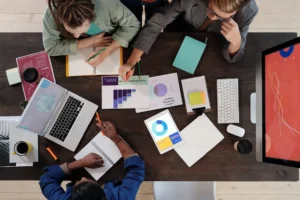Pranks have not only been a staple in personal interactions, but they’ve also found a significant place in popular culture. From TV shows to movies, pranks have been used as a source of comedy and entertainment for decades. The influence of pranks in media has helped shape how people view humor and how pranks are executed in real life.
One of the most iconic examples of pranking in popular culture is the hit TV show Punk’d, created by Ashton Kutcher. Premiering in the early 2000s, the show featured elaborate pranks played on celebrities, often in public settings. The show became a massive hit, showcasing how pranks could go beyond simple gags and be used as entertainment for a wider audience. The success of Punk’d led to a resurgence of prank-based content, inspiring countless prank shows and online channels.
In addition to Punk’d, other TV shows have incorporated pranks into their storylines or formats. For example, shows like Impractical Jokers feature a group of friends who prank each other in increasingly ridiculous situations. The humor is often derived from the awkwardness of the situation and the genuine reactions of the people involved. These kinds of pranks have continued to gain popularity, highlighting the fun and unpredictability that comes with pranking.
Movies, too, have incorporated pranks as a central part of their plots. In many comedy films, pranks serve as a way to propel the story forward or provide comic relief. For instance, in Home Alone, the main character, Kevin, uses a variety of clever pranks to outwit burglars. While the pranks are meant to defend his home, they also provide some of the most memorable and funniest moments in the film. These films have helped shape the image of pranks in the collective imagination, associating them with cleverness and comedic timing.
In today’s digital age, social media has taken pranks to a new level. Platforms like YouTube, TikTok, and Instagram have allowed pranksters to share their videos with a global audience, quickly going viral and inspiring others to create their own pranks. Some influencers and content creators have built entire careers around pranking, often producing elaborate, staged pranks that entertain millions of followers. The instant nature of social media makes it easier than ever for pranksters to receive immediate feedback on their videos, contributing to the growing influence of pranks in digital culture.
As pranks have evolved in popular culture, they have become more than just a way to entertain people. They have become a form of performance art, where creativity, timing, and the element of surprise are crucial. Some prank videos are scripted and staged to create the best possible reaction, while others are spontaneous and rely on the natural unpredictability of human behavior. The influence of pranks in media has not only shaped how we view humor but also how we approach the act of pranking itself.
In conclusion, pranks have played a significant role in popular culture, from TV shows and movies to viral social media content. The portrayal of pranks in entertainment has helped shape our understanding of humor, creating a blueprint for how pranks should be executed for maximum comedic effect. With social media continuing to amplify their reach, pranks are likely to remain a prominent and evolving part of our entertainment landscape.





